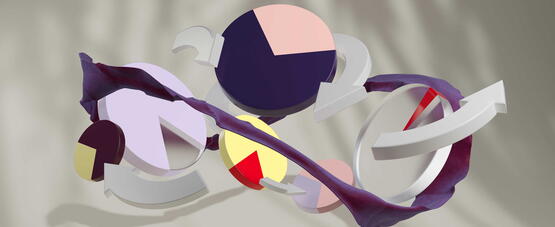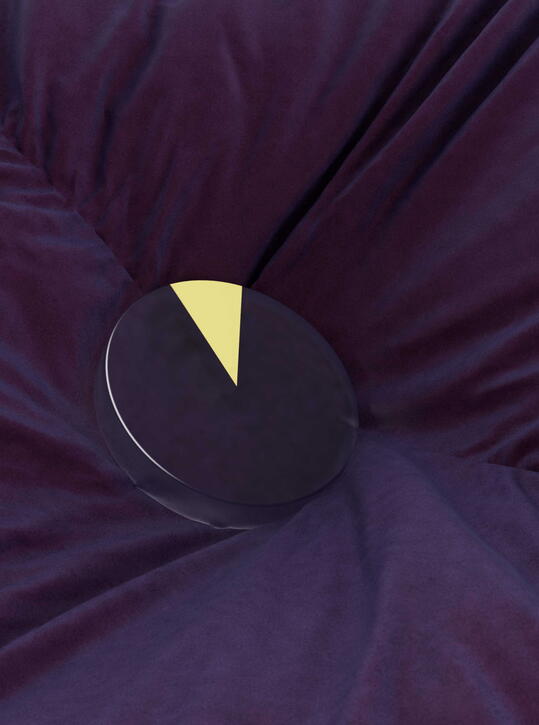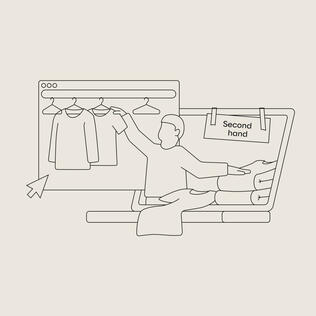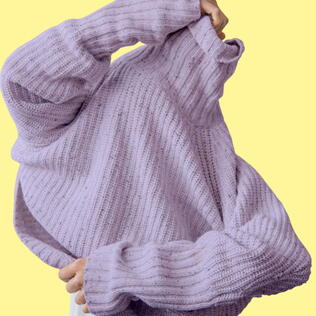Circularity: Nature sets the example

The economy thrives off of new products being brought to market, and this requires resources which are becoming more and more scarce. The circular economy, or the continuous reuse of valuable materials, is the answer to this problem. The Otto Group and its Group companies want to demonstrate how the economy and the environment are compatible.

The figures speak for themselves: Approx. 100 billion tons of material are used in global production every year. Just under nine percent of these materials are sourced from recycling processes. In other words, this means that more than 90 percent of this amount will eventually be disposed of, buried in landfills, or incinerated. Waste that is leading our planet to go beyond its limits and that is also increasingly sinking into the minds of consumers. The Trend Report (only available in German) on Ethical Consumption carried out by the Otto Group in 2020, for example, found that 82 percent of those surveyed wish for a way to escape the throwaway society and are in favor of their products lasting longer and greater material efficiency. 73 percent think it is good to be able to sell or buy used items such as worn clothing or old furniture. And 61 percent view that borrowing, sharing, and reselling represents a new attitude toward life.
The goal: a long useful life
Solutions to the problem have existed for a long time. Nature itself provides an impressive example of how the loop can be closed. As we all know, no waste is produced in nature. Instead, all of its elements are used as beneficial nutrients for a balanced ecosystem. This concept must also be transferred over to the economy and applied to organic and technological products, such as by having textiles made of natural fibers or producing electronic goods that can be fully recycled. The environmental footprint can also be reduced if products are kept in the circular economy as long as possible by renting, repairing, and reusing them. The Otto Group has been promoting the protection of the environment as its corporate goal for more than thirty years and continues to follow this path with rigor. The circular economy is part of the current CR strategy, and circular processes are progressively being incorporated into core processes along the entire value chain—starting with the selection of materials all the way to recycling.

Optimizing products for the circular system
The circular economy begins with the selection of materials. The companies in the Otto Group are increasingly using sustainable raw materials such as FSC-certified wood and organic cotton. The percentage of materials which are recycled and recyclable are to be gradually increased in doing so. The next crucial step is the design, where one of the main objectives is to optimize the durability of products. Being able to wear clothing in different ways or having a modular design ensures that fashion, for example, can be worn for a long time and not just a total of seven times, which is the average number of times a garment is worn before being thrown away. The recyclability of the products also plays a major role. In the best case, as few materials as possible should be used and it should be possible to separate them from each other during the recycling process. Many Otto Group companies are taking the first important steps to do this. OTTO, for instance, launched its first “Circular Collection” and Bonprix added the first Cradle to Cradle Certified™ products to its range in 2021. Cradle to Cradle is a strict certification standard for recyclable products that doesn’t only test material health but also the capability to be recycled. Production itself is also important when it comes to the raw material efficiency. In this case, the main objective is to produce as little waste as possible during the production of textiles, for example, or to avoid using chemicals that make recycling harder at a later stage.
Repair, reuse, resell

Longer-lasting products are also becoming more and more important due to growing customer awareness and new regulatory requirements aimed at achieving a circular textile industry. The market for second-hand clothing is suddenly no longer a niche in the textile industry but a playground for fashion trendsetters. About You, for example, under the category “Second Love” is one of the largest textile ranges available for carefully-inspected second-hand products. Similar concepts also apply for other product categories. At BAUR, for instance, technical gadgets can also be rented. And should a product happen to break, then that’s no reason to toss it away. Some Group companies offer repair services or do-it-yourself tutorials. Take Manufactum for example: it has specialized in easily reparable handcrafted products for thirty years and has long since spoke out against the throwaway mentality that is more relevant today than ever before.
A second life for raw materials
For many years, OTTO has made it possible to return used clothing in Hermes parcels at no cost at all with its clothing return initiative “Platz schaffen mit Herz” (Make space—with a heart). Each item is sorted and inspected by hand in order to find new owners around the world for most of the clothing. Items which can no longer be used due to the natural consequences of use are sent for proper recycling instead of ending up at landfills or being incinerated. After all, that’s the overall goal: to introduce items that can’t be reused into the recycling circuit so that the materials can be made available again for the manufacture of new products. In this way, things would be just as they are in nature: the cycle of (product) life starts all over again.
Recyclable design and circular services such as second-hand allow us to increasingly extend the useful life of products and close the material cycle, and thereby reduce the consumption of resources in collaboration with our consumers.






